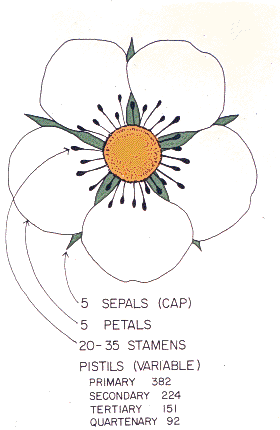Crown and Flower Bud Damage Related to Feb 19/20 Freeze (Noon, Sat., 3/21/15)
go.ncsu.edu/readext?346601
en Español / em Português
El inglés es el idioma de control de esta página. En la medida en que haya algún conflicto entre la traducción al inglés y la traducción, el inglés prevalece.
Al hacer clic en el enlace de traducción se activa un servicio de traducción gratuito para convertir la página al español. Al igual que con cualquier traducción por Internet, la conversión no es sensible al contexto y puede que no traduzca el texto en su significado original. NC State Extension no garantiza la exactitud del texto traducido. Por favor, tenga en cuenta que algunas aplicaciones y/o servicios pueden no funcionar como se espera cuando se traducen.
Português
Inglês é o idioma de controle desta página. Na medida que haja algum conflito entre o texto original em Inglês e a tradução, o Inglês prevalece.
Ao clicar no link de tradução, um serviço gratuito de tradução será ativado para converter a página para o Português. Como em qualquer tradução pela internet, a conversão não é sensivel ao contexto e pode não ocorrer a tradução para o significado orginal. O serviço de Extensão da Carolina do Norte (NC State Extension) não garante a exatidão do texto traduzido. Por favor, observe que algumas funções ou serviços podem não funcionar como esperado após a tradução.
English
English is the controlling language of this page. To the extent there is any conflict between the English text and the translation, English controls.
Clicking on the translation link activates a free translation service to convert the page to Spanish. As with any Internet translation, the conversion is not context-sensitive and may not translate the text to its original meaning. NC State Extension does not guarantee the accuracy of the translated text. Please note that some applications and/or services may not function as expected when translated.
Collapse ▲Good morning!
In a visit through our western piedmont on 3/20/15 (first day of spring), I observed some cold damage to uncovered Chandler crowns and flower buds from the arctic clipper of a month ago (3/19-3/20). My assessment is that this Feb. freeze event will have the effect of delaying the crop by maybe another week. But in areas where covers were “on” during this severe cold event, I don’t anticipate any further delays in harvest.
In this first photo (Fig. 1), you can see how a temperature near 0 F affected non-emerged flower buds a month ago in plants that had no row cover protection. Note the small black “pimple” in center of flower. 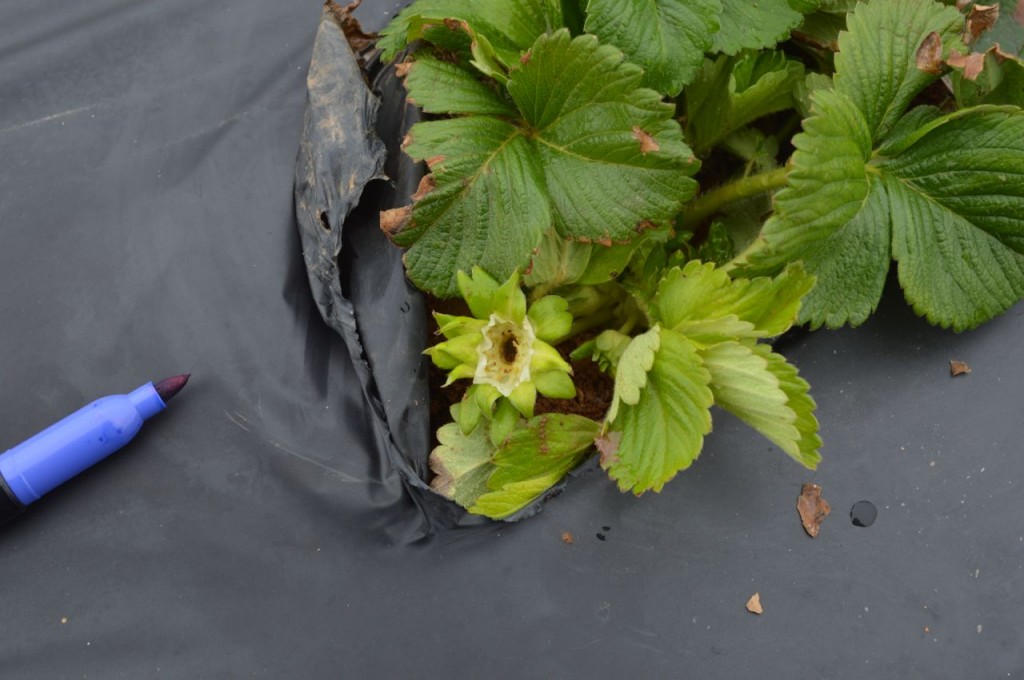 Fig. 1. A ‘winter killed’ open blossom observed during plant clean up this past week. The center area of the blossom is the reproductive portion of the flower (see Fig. 2), and when you see this type of injury you know there will be ‘no berry’ come springtime!
Fig. 1. A ‘winter killed’ open blossom observed during plant clean up this past week. The center area of the blossom is the reproductive portion of the flower (see Fig. 2), and when you see this type of injury you know there will be ‘no berry’ come springtime!
2a
2b

Figure 2a. The reproductive ‘center area’ of the blossom has what are called “pistils.” For a large primary flower there may more than 380 pistils, but for a much smaller quaternary flower less than 100. The pistils in the blossom shown in Fig. 1 were killed by a freeze event a month ago while they were still at the flower bud stage (non-emerged buds). If you have an ambitious youngster, you may have them undertake a project to count the number of flower pistils in the center of a strawberry blossom. Again, the more pistils, the BIGGER the berry. Fig. 2b. The female flower parts (pistils) that develop into the ‘seeds’ of the strawberry fruit are embedded in receptacle tissue.
In this next photo you can see internal browning in this Chandler plug plant’s main crown (Fig. 3). But, this amount of internal crown damage is not as concerning to me as the damage that was done to what would have been the season’s first flush of berries – about 75% of these emerged flower buds were dead (Fig. 4). I was actually surprised there was not more internal browning, considering that these plants were not covered. However, I do think these Chandlers were in a near perfect state of dormancy when this particular freeze ‘hit’ in the third week of February. I believe that if the grower had tried to “push” the crop with a late fall/early winter cover, the crown damage would have been ‘way worse.’ It is really important in this region to be aware of how counter-productive row covers in late fall and early winter may be to getting plants to ‘harden off.’ And, if you need to see an example of this problem (poorly hardened plants), check out the cut-offs in Figure 7.
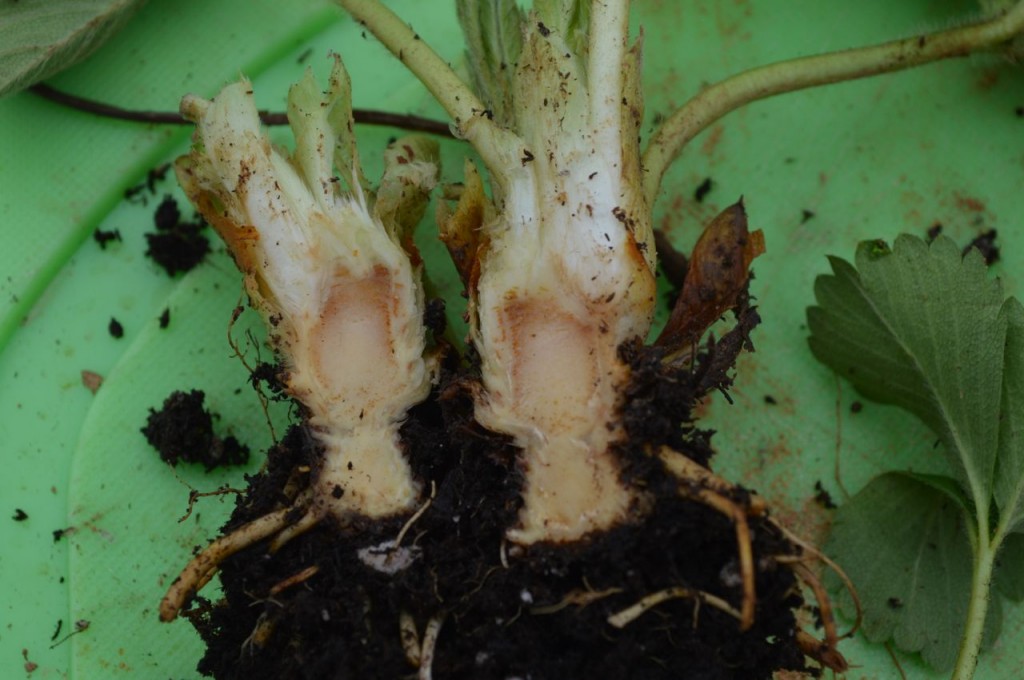 Fig. 3. Inspection of crown tissue on 3/20/15 showed some browning from 2/19-2/20 cold event.
Fig. 3. Inspection of crown tissue on 3/20/15 showed some browning from 2/19-2/20 cold event.
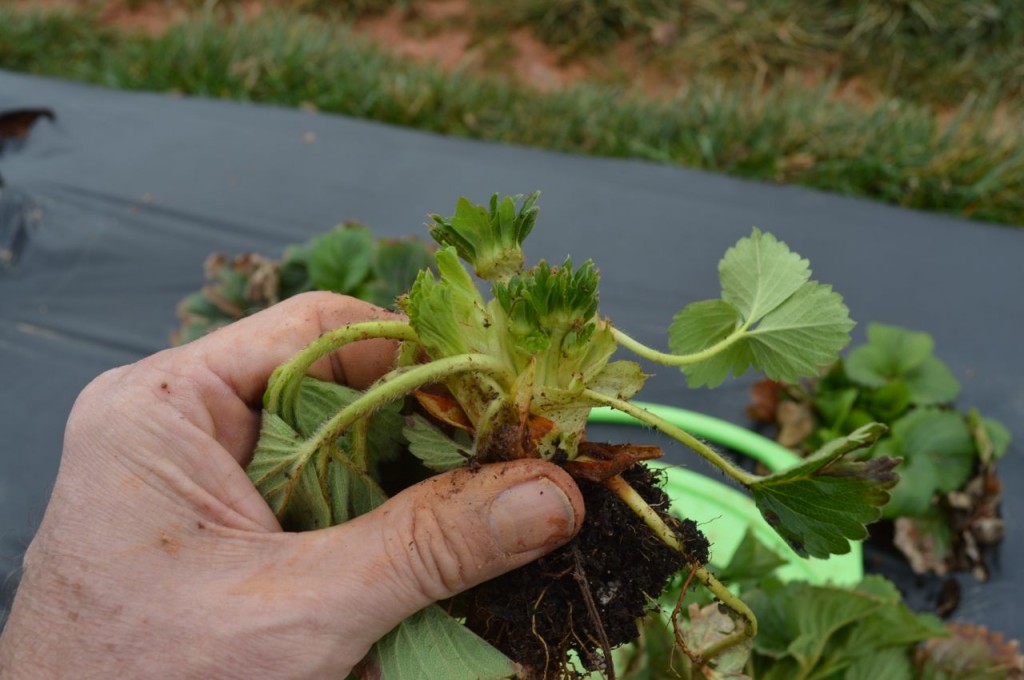 Fig. 4. In the center of this photo are “emerged” flower buds. If you look closely, you will see at the top of this inflorescence a large flower bud by itself – this is the primary flower. Beneath each primary flower are two slightly smaller secondary flowers called the ‘secondaries.’ Beneath each secondary flower are two smaller ‘tertiary’ flowers. Two smaller quaternary flowers can form beneath each tertiary. Each strawberry inflorescence may produce 15 or more fruit, although 5-6 is more typical.
Fig. 4. In the center of this photo are “emerged” flower buds. If you look closely, you will see at the top of this inflorescence a large flower bud by itself – this is the primary flower. Beneath each primary flower are two slightly smaller secondary flowers called the ‘secondaries.’ Beneath each secondary flower are two smaller ‘tertiary’ flowers. Two smaller quaternary flowers can form beneath each tertiary. Each strawberry inflorescence may produce 15 or more fruit, although 5-6 is more typical.
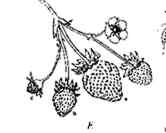 Fig. 5. The primary blossom produces the largest berry. The two secondary blossoms produce smaller berries than the primary, but they are still quite large in Chandler. Yesterday, I noted that the emerged primary flower, and two secondaries (these can be seen in Fig. 4) had been killed by freeze episode last month at this particular location. Even some of the tertiaries were dead!
Fig. 5. The primary blossom produces the largest berry. The two secondary blossoms produce smaller berries than the primary, but they are still quite large in Chandler. Yesterday, I noted that the emerged primary flower, and two secondaries (these can be seen in Fig. 4) had been killed by freeze episode last month at this particular location. Even some of the tertiaries were dead!
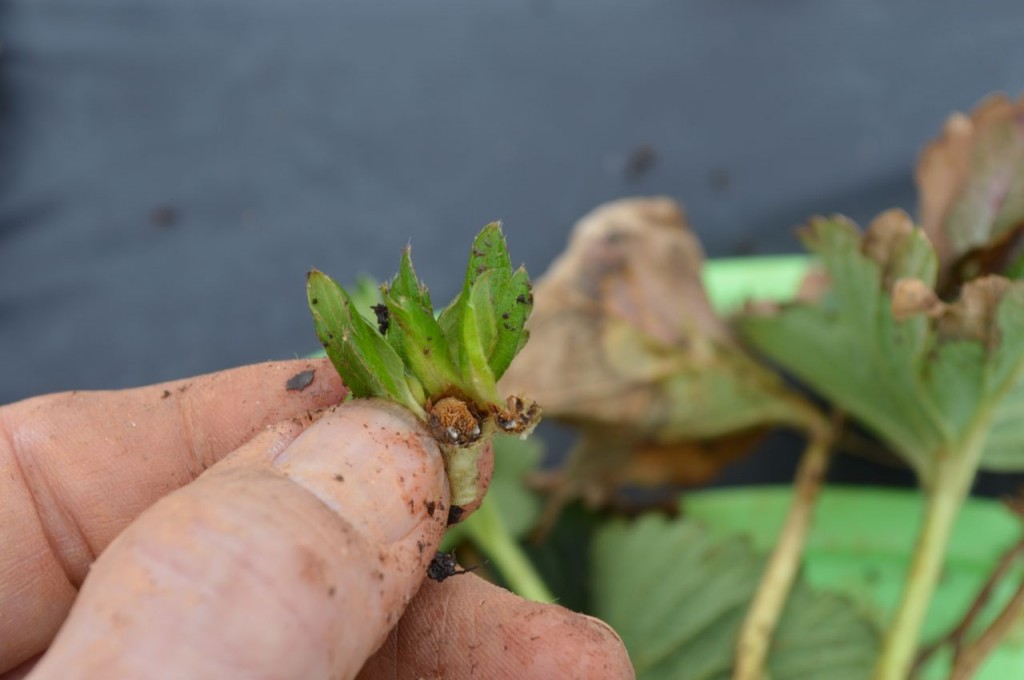 Fig. 6. Winter killed primary flower.
Fig. 6. Winter killed primary flower.
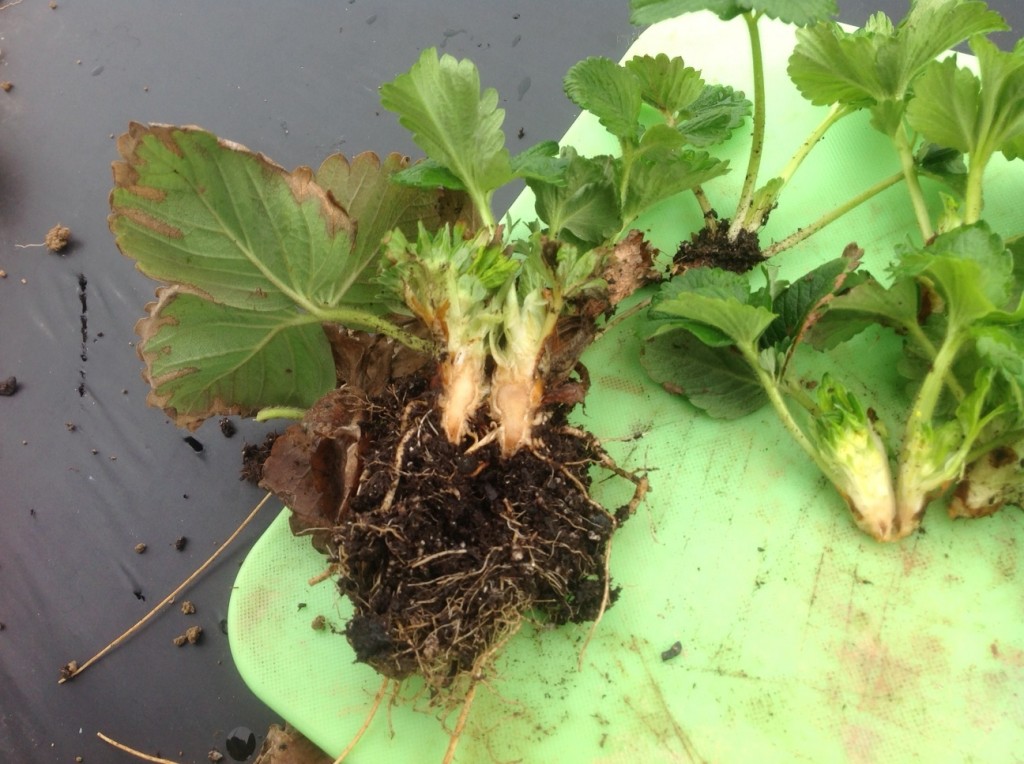 Fig. 7. On the left is cutoff plant (set in mid-Oct) that had a row cover treatment ON through late fall and early winter. On the right is a plug plant set in early Oct that had NO COVER in fall or early winter, and showed relatively little winter injury (it was well hardened off in Nov and Dec). However, at this farm location the plugs had row covers ON during severe events in Jan and Feb 2015 (Greensboro, NC, photo on 3/20/15, E. B. Poling).
Fig. 7. On the left is cutoff plant (set in mid-Oct) that had a row cover treatment ON through late fall and early winter. On the right is a plug plant set in early Oct that had NO COVER in fall or early winter, and showed relatively little winter injury (it was well hardened off in Nov and Dec). However, at this farm location the plugs had row covers ON during severe events in Jan and Feb 2015 (Greensboro, NC, photo on 3/20/15, E. B. Poling).
Raleigh, NC 27695-7609
Sidney J. Harris, In: Reclaiming a Lost Heritage – Land-Grant & Other Higher Education Initiatives for the Twenty-first Century



